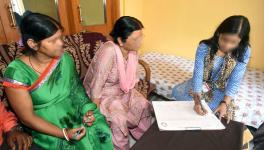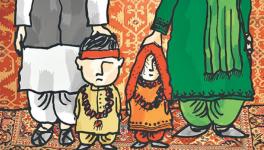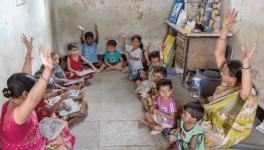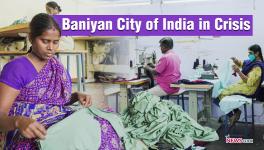Tamil Nadu: Rising Child Labour Goes Unchecked as Govt Fails to Pay Heed
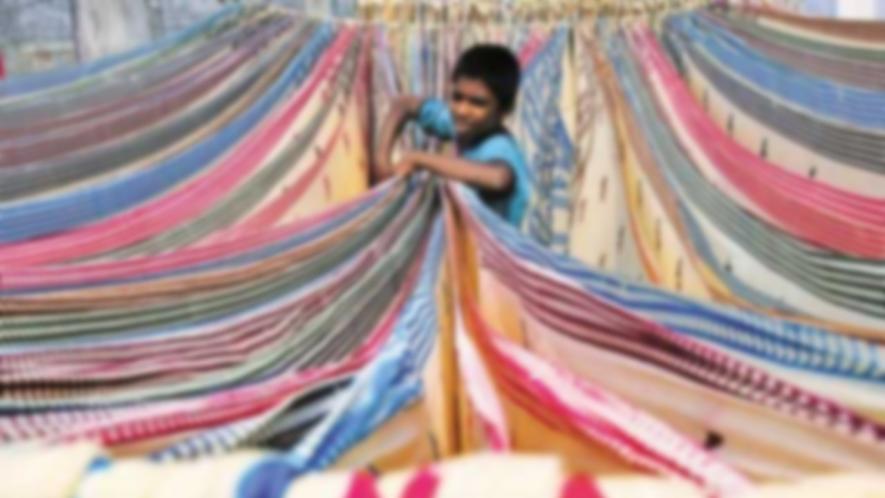
Representational image. | Image Courtesy: Livemint
“As the pandemic wreaks havoc on family incomes, without support, many could resort to Child labour’, the International Labour Organisation (ILO) observed on June 12, the World Day Against Child Labour. The observation has come true in Tamil Nadu with the menace of child labour making a comeback. Around 200 children have been rescued from industries so far after the lockdown amid a stark lack of support from the government.
The actual number of child labourers could be severely high, given the fact that the surprise visits and checks have become a rarity in the absence of officers in around 20 districts in the District Child Protection Unit (DCPU).
Even worse, the government is yet to appoint a chairperson and members to the Tamil Nadu Commission for Protection of Child Rights (TNCPCR). The chairperson’s and the members’ posts have been lying vacant since January and May 2020 respectively.
Meanwhile, the practice of child labour is rampant in districts including Virudhunagar, Coimbatore, Erode, Namakkal and Tiruppur, which house garments, textile and firecracker industries in large numbers.
SPURT IN CHILD LABOUR DURING PANDEMIC
The COVID-19 pandemic has only worsened the already rampant child labour practice in the country. Tamil Nadu is no exception to the global and national trend, with reports emerging on increase in number of child labour across construction, agriculture, garments, brick kilns and firecracker industries.
A Devaneyan, a child rights activist, told NewsClick, “Child labour could increase after a disaster, but putting the blame on the crisis alone is meaningless. The state government has paid very little attention to ensure the safety of children, with a severe lack in monitoring the practice of child labour, marriage and trafficking.”
The inaction of the government on many fronts, particularly in leaving the crucial posts vacant in the TNTCPR, is playing against the policy of eradicating child labour.
“The very reason for the increase in such practices is the lack of coordination among different government agencies. There is very little attention on prevention mechanisms while only reports on incidents are being filed”, said Devaneyan.
DCPUs FUNCTIONING WITHOUT OFFICERS
The DCPUs play a vital role in coordinating and implementing all child rights and protection activities at district levels. The units are headed by the District Collectors while the District Child Protection Officers (DCPO) are responsible for the functioning of the DCPUs. Around 50% of the DCPO positions are remaining vacant across the state, leaving a disconnect with the ground at a time when the exploitation of children could be peaking.
“The DCPU in 21 districts are functioning without the District Child Protection Officers. With a vacuum in crucial posts, how can we expect to prevent the cruel practices against children. The children of the state require more attention from the government and the political parties”, said Devaneyan.
The lack of officers in such nodal agencies has restricted the checks on and visits to industries. The miniscule support from the government in ensuring mid-day meals or dry rations to the school-going students has also led to the increase in child labour.
The state government could have emulated Kerala’s initiative to provide meals to the students staying back at home during the initial phase of the pandemic itself. But it did not.
The rescue operations, hardly a handful in the past several months, were carried out in Tamil Nadu in connection with the World Day against Child Labour. The few searches have resulted in around 200 children being rescued from different industries. The industries are preferring children because they are cheap labour, while the poor parents, who lost their jobs and income due to the unplanned lockdown, are sending them to jobs.
174 CHILDREN RESCUED IN TIRUPPUR DISTRICT
The western part of the state, known for its textile and garment industry, is also known for recruiting children as labour. The pandemic has further increased the number of children being engaged for cheap labour with their parents silently condoning it.
As many as 174 children were rescued in two different operations held in a single garment factory in Tiruppur district. The children were brought from Tiruvannamalai, Vizhupuram and Krishnagiri districts and were forced to work for 12 to 14 hours.
Karuppasami, convenor of Campaign against Child Labour, said, “The children had completed their class X and XII education. Not only did the employer force them to work for a longer duration every day, they were not even permitted to go back home to receive their school certificates.”
Given the number of children rescued from a single factory, the number of child labour employed across the thousands of textile and garment factories could be very high. But the practice has been left unchecked by the government during the pandemic.
CHILD LABOUR IN SIVAKASI INDUSTRIAL BELT
The national lockdown and the closure of schools have sharply driven up child labour in the Sivakasi region of Virudhunagar district. The district has long been home to numerous child labourers given the high number of the firecracker and matchbox industries.
Rajagopal, state convenor of Tamil Nadu and Puducherry chapter of Child Trafficking Free India, told NewsClick, “We managed to rescue four girl children and four adolescent girls from a firecracker manufacturing unit near Sivakasi. The lockdown has now forced many children to take up jobs in the absence of income by their parents.”
The rescued children are school-going and were not working earlier. The closure of schools to protect the children from the pandemic has ironically forced a section of them to take up menial jobs in the cracker and matchbox industry.
The workers did not receive any cash relief in the lockdown since a welfare board does not exist for the 8-lakh strong work force in the cracker industry. The loss of income for several months and the fear of hunger forced the young students to work. The cracker and match industry workers are set to get a welfare board as per the announcement of Chief Minister Edappadi K. Palaniswami on November 11.
“A major threat now is on the number of children returning to school post lockdown. Since they are earning and the parents are feeling comfortable with it, I expect that at least 40% of these children won't return to schools. This is a real threat due to the lockdown”, Rajagopal added.
As the UNICEF defines, “Child labour is the product of many factors, such as poverty, social norms condoning it, lack of decent opportunities for adults and adolescents, migration and emergencies. It is not only a cause, but also the consequence of social inequalities reinforced by discrimination.”
Considering the pandemic, the lack of job opportunities and attention given by the governments are only encouraging the practice of child labour.
Get the latest reports & analysis with people's perspective on Protests, movements & deep analytical videos, discussions of the current affairs in your Telegram app. Subscribe to NewsClick's Telegram channel & get Real-Time updates on stories, as they get published on our website.









